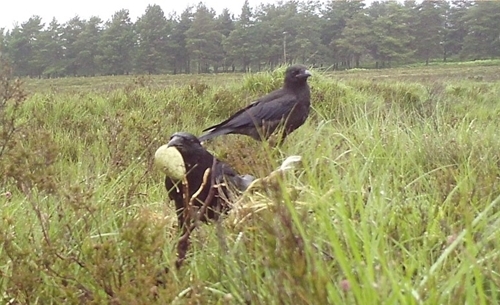By Henrietta Appleton, GWCT Policy Officer (England)

The Daily Telegraph recently reported that the RSPB is seeking contractors to undertake predation management as part of their efforts to protect curlews in Northern Ireland.
Whilst the article was critical of the way the RSPB was handling the process, it revealed that predation management is seen by the RSPB as a vital part of their efforts to conserve the curlew - a point we have been making repeatedly and one that is founded on robust science.
But there is another equally important point that may have been lost. If predation management is to be undertaken, whether in support of wild game or species of conservation concern, it must be done well, in accordance with the law and best practice by properly qualified and trained operators. The old maxim if you are going to do something, do it well or not at all, applies, particularly as you are taking one life to protect another. The recent RSPB paper on breeding waders’ response to habitat and predator management illustrated this risk.
The paper concluded that the model of delivery adopted in the study was highly unlikely to be effective for curlew; yet their management of predators only involved limited fox control through rifle shooting and the deployment of Larsen traps for the control of crows.
In contrast, a recently published 2023 GWCT paper showed the great value to curlew conservation of predation management as undertaken on grouse moors which involves the full suite of legal predator control methods.
It is no wonder that those managing nature reserves are having to employ outside contractors. We note current job adverts for nature reserve warden positions require expertise in land and habitat management, some specialist knowledge, knowledge of biological monitoring and the ability to communicate with the general public and I suspect, by and large, they will operate during normal working hours. There is no mention of pest or predator management skills.
Controlling pests and predators takes time, knowledge and skill. It requires understanding of animal/bird behaviour and how this interacts with the particular landscape as well as skill at applying fieldcraft and best practice to maximise success in capturing the target animal and avoiding non-target species. These attributes take time too; but time is also relevant in terms of effort.
Maximising success and minimising risks to both non-targets and the public, may mean needing to shoot foxes at night which involves an understanding of nocturnal fox behaviour, the ability to identify a fox at night, and knowledge of how to use thermal and night vision equipment and a high-powered rifle.
Another example is the checking of humane cable restraints (HCR). Whilst it is a requirement to check HCRs once a day, it is advisable to check them twice a day to ensure they are operating effectively. In the morning the operator needs to be committed to an early check to despatch the fox or release the non-target that might have been caught overnight and then to check the condition of the HCR.
Visiting them again in the afternoon is good practice to check that the HCRs are still set and positioned as intended (in other words they have not been knocked by passing wildlife) and to despatch or release any daytime captures to avoid them remaining captive overnight.
For the very reason that good predation management requires skill and the application of best practice, the GWCT runs courses on fox, mustelid and corvid control. In Scotland an operator must be trained and registered with the Police before setting/deploying restraints. In England and Wales such a legal requirement does not yet apply.
But across all three nations these courses are regularly attended by new and experienced operatives who are seeking to learn from the GWCT best practice techniques and how to ensure full compliance with the law. For example, in England the General Licence requires that Larsen traps should be provided with appropriate shelter “that provides effective protection from rain and direct sunlight under prevailing and anticipated weather conditions”.
Consequently we advise operators that to rely on the shelter provided by the manufacturer alone may not be sufficient to meet this condition, and therefore they should site the trap in the lee of a hedge or wall which provides shelter to both decoy and captives. If a Larsen needs to be set in an exposed location, then it is important to provide extra shelter such as an additional side panel to the decoy compartment.
So, if we are to successfully conserve some of our key red-listed species such as the curlew, the environmental NGOs need to ensure that predation management is undertaken by professional, experienced operators who are prepared to work unsocial hours to maximise success whilst minimising risk and use all the tools available to minimise predation pressures. This is what grouse managers do and that is why curlew productivity is four times greater on grouse moors compared to unmanaged moorland.